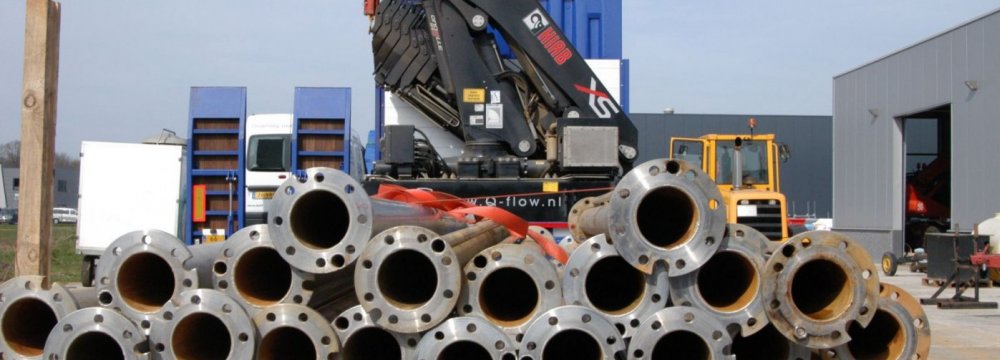
Pipes, Profiles Drive Iran’s Steel Industry

Amir Hossein Kaveh, the head of the Syndicate of Steel Pipe and Profile Manufacturers, says Iran’s steel pipe and profile capacity stands at 18.5 million tons per year, but only one-third is currently used.
According to estimates by Metal Bulletin Research this year, flat steel consumption was mainly supported by higher production of pipes, as the construction of major gas pipelines, the IGAT series, is stuttering due to financial issues.
The growing flat steel needs of the industries were largely covered by local material, as the country’s largest flat steel supplier Mobarakeh Steel Company switched from an export-oriented to domestic market- oriented sales policy.
Over the first half of the current Iranian year (March 21-Sept. 22), hot- and cold-rolled coil exports from the country were down by 80% and 95%, to 156,000 and 6,000 tons, respectively, according to ISPA.
The main reason behind this change was MSC’s dispute with the Pipe and Profile Manufacturers Association last year. The syndicate accused MSC of refusing to provide pipe producers with the needed feedstock of flat steel and prioritizing exports. The dispute dragged on for months, with some other consumers voicing similar complaints until the Ministry of Industries, Mining and Trade ordered MSC to shift its focus to the local market.
The other reason for the drop in export flat steel volumes was the anti-dumping cases begun by the European Commission and Thailand.
At the same time, finished steel imports, HRC mainly, were down by 29% year-on-year in the country, totaling 863,000 tons. While the demand for flat steel is on the rise this year in Iran, finished long steel consumption is shrinking due to the lack of finance in the construction sector.
The country’s rebar production totaled 3.07 million tons in March-September, down by 2% year-on-year. The demand for the product dropped 7% year-on-year, to 2.8 million tons over the period. The same trend was noted in the beams segment, as its production figure slid by 7% year-on-year, to 460,000 tons, and consumption by 2% to 350,000 tons.


Trump weighs using $2 billion in CHIPS Act funding for critical minerals

Codelco cuts 2025 copper forecast after El Teniente mine collapse

Electra converts debt, launches $30M raise to jumpstart stalled cobalt refinery

Barrick’s Reko Diq in line for $410M ADB backing

Abcourt readies Sleeping Giant mill to pour first gold since 2014

Nevada army depot to serve as base for first US strategic minerals stockpile

SQM boosts lithium supply plans as prices flick higher

Viridis unveils 200Mt initial reserve for Brazil rare earth project

Tailings could meet much of US critical mineral demand – study

Kyrgyzstan kicks off underground gold mining at Kumtor

Kyrgyzstan kicks off underground gold mining at Kumtor

KoBold Metals granted lithium exploration rights in Congo

Freeport Indonesia to wrap up Gresik plant repairs by early September

Energy Fuels soars on Vulcan Elements partnership

Northern Dynasty sticks to proposal in battle to lift Pebble mine veto

Giustra-backed mining firm teams up with informal miners in Colombia

Critical Metals signs agreement to supply rare earth to US government-funded facility

China extends rare earth controls to imported material

Galan Lithium proceeds with $13M financing for Argentina project

Kyrgyzstan kicks off underground gold mining at Kumtor

Freeport Indonesia to wrap up Gresik plant repairs by early September

Energy Fuels soars on Vulcan Elements partnership

Northern Dynasty sticks to proposal in battle to lift Pebble mine veto

Giustra-backed mining firm teams up with informal miners in Colombia

Critical Metals signs agreement to supply rare earth to US government-funded facility

China extends rare earth controls to imported material

Galan Lithium proceeds with $13M financing for Argentina project

Silver price touches $39 as market weighs rate cut outlook

















